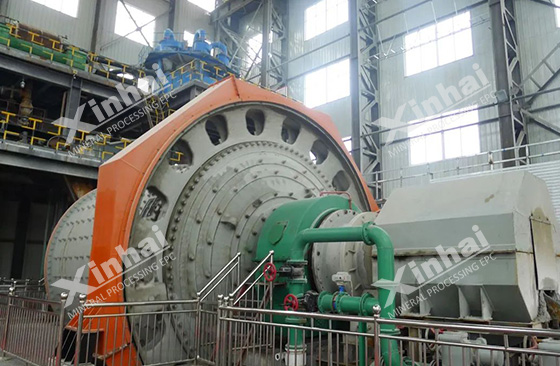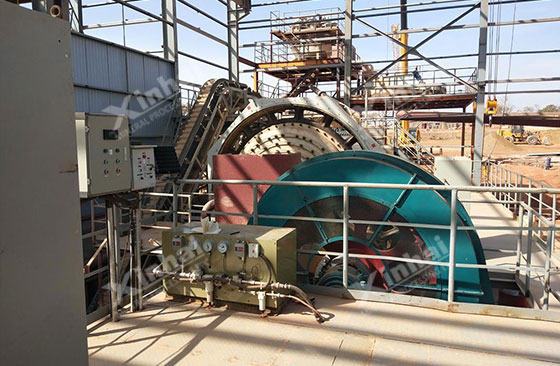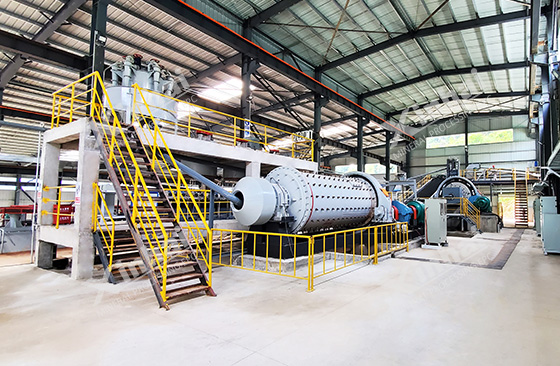
Through the long period operation, ball mill meets the problem of grinding efficiency descending. It impacts the normal operation of processing plant, and also causes economic losses. In actual production, how can we effectively increase ball mill grinding efficiency? Seven tips will help you.
Commonly, the grindability is determined by the hardness, degree of dissociation, size and structure of raw ore. The small grindability means that the raw ore is easy to grind, which has relatively small wear on the liner and grinding media of the ball mill and low energy consumption. The large grindability means the raw ore is hard to grind, which has larger wear on the liner and the grinding media of ball mill and larger energy consumption. Therefore, the grindability directly influences the grinding efficiency of ball mill.

In production, when the raw ore is hard to grind and the required particle size is thin, we can take measures to increase raw ore grindability under economic and site permission. Such as adding chemical reagent during grinding or heating the minerals to reducing the hardness.
The larger feeding particle size is, the greater the work done by the ball mill on the ore, which impacts the grinding efficiency. To reach the eligible grinding fineness, the workload must increase. The energy consumption is also increasing.
If the feeding particle size reduces, the crushing product particle size is small. It is more crushing and less grinding. Therefore, the feeding particle size is suitable, so the grinding efficiency also increases.

Under certain rotating speed, the larger steel ball filling ratio is, the more hits of materials and the larger grinding area is. So, the energy consumption is also large. It easily leads to the change of steel ball motion state, which reversely reduces the hit effect of large particle material. In production, the filling ratio of many mines is 45%~50%. However, it is only an approximate range, because the actual conditions of different processing plants are different. Copying blindly will not achieve the ideal grinding efficiency, it depends on the situation.
During the long period of operation, the ore grinding will lead to the wear of steel ball. It leads to the ratio change of different size steel balls. It changes the grinding product fineness and even influences the grinding efficiency of ball mill. Therefore, the operators of ball mill need to check the steel ball situation regularly, adding steel ball reasonably and ensuring the stable production of ball mill.
Generally, the grinding concentration influences the pulp proportion, fluidity and degree of adhesion of steel ball. The grinding concentration, the slurry flowing fast, the material is not easy to stick to steel balls, and also reduces the impact and grinding to material, leading to unqualified discharge particle size and low grinding efficiency. The grinding concentration is high, so the material is easy surrounding to the steel balls, increasing the impact and grinding to material. However, the pulp flows slow, easy to over grinding.
In production, controlling grinding concentration is through controlling the feeding amount, water supply, or adjusting the particle size composition of graded returned sand of control classification, helping increasing ball mill grinding efficiency.

According to the ore characteristic of raw ore (valuable mineral inlaid granularity, monomer dissociation, gangue mineral inlaid granularity), the grinding flow is optimized, such as pre-throwing, pre-enrichment, stage grinding, pre-classification. On the one hand, it reduces the feeding amount. On the other hand, valuable minerals can be recovered in time. It increases the ball mill grinding efficiency.
The classification efficiency has an implied influence on grinding efficiency. The high classification efficiency means that the qualified particles can be high-efficiency discharged in time. The low classification means most of the qualified particles are not discharged and returned to ball mill regrinding, which easily causes over grinding. In production, two-stage classification or improving classification equipment can increase the classification efficiency and relatively improving the grinding efficiency.

In the grinding process, there are multiple indexes influencing grinding efficiency. Many indexes are hard to quantitative analyze, which can only be qualitatively analyzed. This requires ball mill technicians to analyze according to the actual production situation on site and the results of qualitative analysis. Finally, reasonable technical parameters are obtained to guide on-site production and strive for the ideal ball mill grinding efficiency.
To find out more about our products and solutions, please fill out the form below and one of our experts will get back to you shortly.